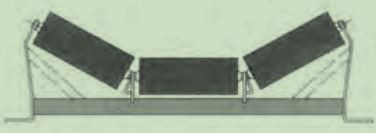 Afrikaans
Afrikaans  Albanian
Albanian  Amharic
Amharic  Arabic
Arabic  Armenian
Armenian  Azerbaijani
Azerbaijani  Basque
Basque  Belarusian
Belarusian  Bengali
Bengali  Bosnian
Bosnian  Bulgarian
Bulgarian  Catalan
Catalan  Cebuano
Cebuano  Corsican
Corsican  Croatian
Croatian  Czech
Czech  Danish
Danish  Dutch
Dutch  English
English  Esperanto
Esperanto  Estonian
Estonian  Finnish
Finnish  French
French  Frisian
Frisian  Galician
Galician  Georgian
Georgian  German
German  Greek
Greek  Gujarati
Gujarati  Haitian Creole
Haitian Creole  hausa
hausa  hawaiian
hawaiian  Hebrew
Hebrew  Hindi
Hindi  Miao
Miao  Hungarian
Hungarian  Icelandic
Icelandic  igbo
igbo  Indonesian
Indonesian  irish
irish  Italian
Italian  Japanese
Japanese  Javanese
Javanese  Kannada
Kannada  kazakh
kazakh  Khmer
Khmer  Rwandese
Rwandese  Korean
Korean  Kurdish
Kurdish  Kyrgyz
Kyrgyz  Lao
Lao  Latin
Latin  Latvian
Latvian  Lithuanian
Lithuanian  Luxembourgish
Luxembourgish  Macedonian
Macedonian  Malgashi
Malgashi  Malay
Malay  Malayalam
Malayalam  Maltese
Maltese  Maori
Maori  Marathi
Marathi  Mongolian
Mongolian  Myanmar
Myanmar  Nepali
Nepali  Norwegian
Norwegian  Norwegian
Norwegian  Occitan
Occitan  Pashto
Pashto  Persian
Persian  Polish
Polish  Portuguese
Portuguese  Punjabi
Punjabi  Romanian
Romanian  Russian
Russian  Samoan
Samoan  Scottish Gaelic
Scottish Gaelic  Serbian
Serbian  Sesotho
Sesotho  Shona
Shona  Sindhi
Sindhi  Sinhala
Sinhala  Slovak
Slovak  Slovenian
Slovenian  Somali
Somali  Spanish
Spanish  Sundanese
Sundanese  Swahili
Swahili  Swedish
Swedish  Tagalog
Tagalog  Tajik
Tajik  Tamil
Tamil  Tatar
Tatar  Telugu
Telugu  Thai
Thai  Turkish
Turkish  Turkmen
Turkmen  Ukrainian
Ukrainian  Urdu
Urdu  Uighur
Uighur  Uzbek
Uzbek  Vietnamese
Vietnamese  Welsh
Welsh  Bantu
Bantu  Yiddish
Yiddish  Yoruba
Yoruba  Zulu
Zulu bend pulley and snub pulley
Understanding Bend Pulley and Snub Pulley
In the realm of mechanical engineering and conveyor systems, pulleys play a crucial role in the management of forces and the direction of motion. Among the different types of pulleys, bend pulleys and snub pulleys are particularly significant due to their unique functions and applications.
Bend Pulley
Bend pulleys are primarily used in systems where a change in the direction of the belt is necessary. Typically, they serve to guide the belt through a 180-degree arc or less, allowing the conveyor system to change its course while maintaining efficiency. The design of a bend pulley helps in reducing the overall wear and tear on the conveyor belt by maintaining tension and aligning the belt properly.
A key advantage of using bend pulleys is that they help in optimizing the space in a facility. They allow for tighter turns without compromising the integrity or functionality of the system. However, it’s essential to ensure that the radius of the bend is designed appropriately to prevent excessive stress on the belt, which can lead to premature failure.
Snub Pulley
Snub pulleys, on the other hand, are employed to increase the tension in a belt system. By providing an additional contact point for the belt, they help to enhance the grip between the belt and the driving pulley. This increased tension improves the transfer of power from the driving pulley to the conveyor system, ensuring a smoother and more reliable operation.
bend pulley and snub pulley

One of the critical functions of a snub pulley is to prevent slippage, which can be detrimental to the performance of the entire conveyor system. With inadequate tension, the belt may slip off, causing blockages, reduced efficiency, and potential hazards in the workplace.
Applications and Importance
The correct application of bend pulleys and snub pulleys is vital in various industries, including manufacturing, mining, and logistics. In manufacturing plants, they facilitate the movement of materials and products efficiently across assembly lines. In mining, these pulleys help transport mined materials to processing areas without excessive wear and strain on the system.
Moreover, understanding the specific roles these pulleys play can significantly enhance the longevity and efficiency of conveyor systems. Regular maintenance and monitoring of these components can prevent unexpected downtime and costly repairs, making them indispensable in modern mechanized operations.
Conclusion
In summary, bend pulleys and snub pulleys are integral components of conveyor systems, each serving distinct yet complementary roles. While bend pulleys guide the belt through curves, snub pulleys enhance tension and prevent slippage. Mastering the functionality and application of these pulleys is essential for engineers and operators looking to optimize the performance of their mechanical systems. As industries continue to evolve, the importance of these seemingly simple devices will remain a cornerstone of efficient material handling and transportation.
-
Revolutionizing Conveyor Reliability with Advanced Rubber Lagging PulleysNewsJul.22,2025
-
Powering Precision and Durability with Expert Manufacturers of Conveyor ComponentsNewsJul.22,2025
-
Optimizing Conveyor Systems with Advanced Conveyor AccessoriesNewsJul.22,2025
-
Maximize Conveyor Efficiency with Quality Conveyor Idler PulleysNewsJul.22,2025
-
Future-Proof Your Conveyor System with High-Performance Polyurethane RollerNewsJul.22,2025
-
Driving Efficiency Forward with Quality Idlers and RollersNewsJul.22,2025





























